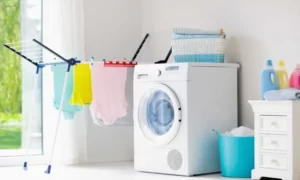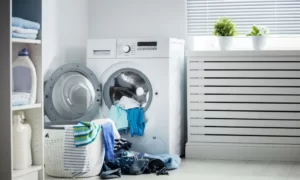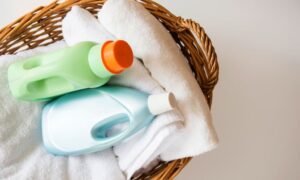Last updated on July 6th, 2023 at 05:38 am
Drums for washing machines are essential parts that ensure our clothing is cleaned effectively. These drums, which are located inside the washing machine, were carefully constructed to offer the best performance and care for our clothes. We can realize the significance and operation of washing machine drums and how they contribute to the production of clean, fresh clothing. In this introduction, we will examine the salient characteristics and advantages of washing machine drums, emphasizing the importance of these components in contemporary laundry equipment.
What is a Washing Machine Drum?
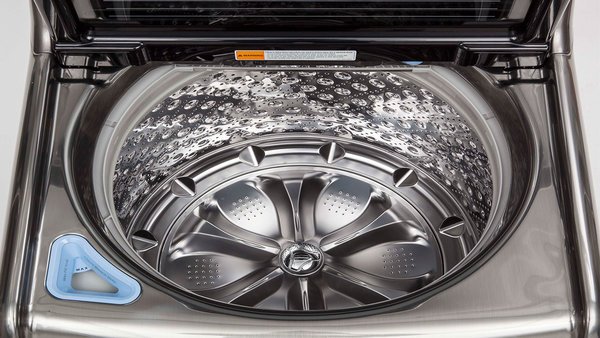
Photo Credit: onsitego
A washing machine’s drum, which holds and agitates the garments while they are being washed, is a crucial part of the appliance. It is a space within the washing machine that is formed like a cylinder. Although certain types may employ plastic or porcelain-enamel, the drum is normally constructed of stainless steel.
Small perforations or holes are incorporated into the drum’s construction to facilitate unrestricted water flow in and out. The tumbling movement produced when the washing machine is running helps to clean the clothing. The drum revolves in a circular manner. The clothes are cleaned of dirt, stains, and odors with the assistance of the rotating drum, detergent, and water.
The drum’s inner surface is covered with paddles or lifters in addition to holes. These paddles aid in the movement of the clothing during the wash cycle, guaranteeing complete cleaning and efficient detergent and water distribution.
The size of a washing machine drum is normally determined by how much laundry it can contain; for example, in kilos or pounds. The number of items that may be washed in a single load depends on the size of the drum.
The drum differs from the agitator found in certain conventional top-loading washing machines, which is a crucial distinction to make. The agitator is a central column with fins or vanes that vigorously agitates the clothing while it cleans it. The contemporary washing machine’s drum, in comparison, delivers a gentler washing action by using rotation and tumbling to clean the clothes.
Overall, the washing machine drum is an essential part that is important to the washing process and ensures effective cleaning while preserving the quality of the clothing.
Types Of Washing Machine Drum
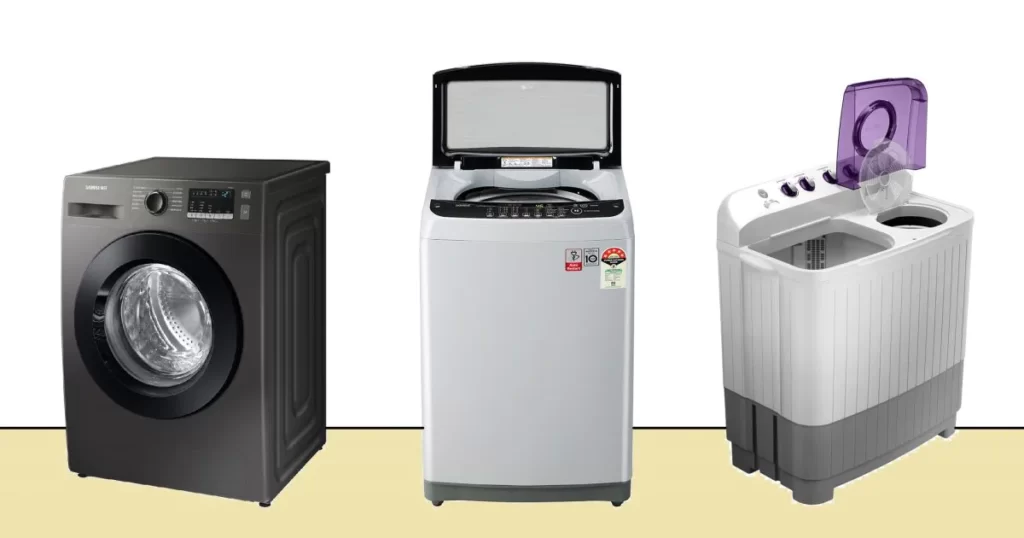
Photo Credit: reliancedigital
Stainless Steel Drums:
Pros:
– Durability: Stainless steel drums are highly durable and resistant to rust, chipping, and cracking.
– Effective Cleaning: They offer a smooth surface that makes it easier to get rid of smells and stains.
– High Spin Speeds: Drums made of stainless steel can withstand high spin rates, which reduces the time it takes for clothes to dry.
– Durability: These drums last longer than those made of conventional materials.
Cons:
– Cost: Washing machines with stainless steel drums tend to be more expensive than those with other drum types.
– Noise: During the spin cycle, the stainless steel drums may become louder, resulting in increased vibration and noise in the laundry room.
– Heat Conductivity: During the washing process, stainless steel drums can heat up fast, which could result in more energy being used.
Porcelain-Coated Drums:
Pros:
– Gentle on materials: The porcelain coating offers a smooth, soft surface that guards against wear and tear on sensitive materials.
– Stain Resistance: Drums with porcelain coatings often resist stains and are simple to clean.
– Quieter Operation: When compared to stainless steel drums, they typically make less noise and vibration.
– Affordability: Washing machines with stainless steel drums tend to be more expensive than ones with porcelain-coated drums.
Cons:
– Sturdiness: Over time, porcelain coatings may crack or wear away, revealing the underlying metal, which may rust or harm textiles.
– Limited Color Options: Consumer design options are constrained by the prevalence of white or light-colored porcelain-coated drums.
– Lower Spin Speeds: They can have lower maximum spin speeds, which causes clothes to dry more slowly.
Plastic Drum
Pros:
– Economical: When compared to washing machines with stainless steel or porcelain-coated drums, those with plastic drums are frequently less expensive.
– Quiet Operation: When in use, plastic drums often make less noise and vibration.
– Lightweight: Because plastic barrels are lightweight, handling them during installation or maintenance is simpler.
– Rust Resistance: Plastic drums do not rust or corrode easily.
Cons:
– Durability: Plastic drums are more prone to cracking or breaking than stainless steel or porcelain-coated drums. They are also less durable than other materials.
– Stain Retention: They are more likely to retain stains than other types of drums, which may necessitate more thorough cleaning.
– Restrictions on Spin Speeds: Plastic drums may have lower maximum spin speeds, which causes drying periods to take longer.
– Environmental Issues: Because plastic is difficult to recycle, it is less environmentally friendly than alternative materials like stainless steel.
It’s crucial to remember that different washing machine manufacturers and models may have a varied selection of drums available.
What Is Drum Sizes and Capacities
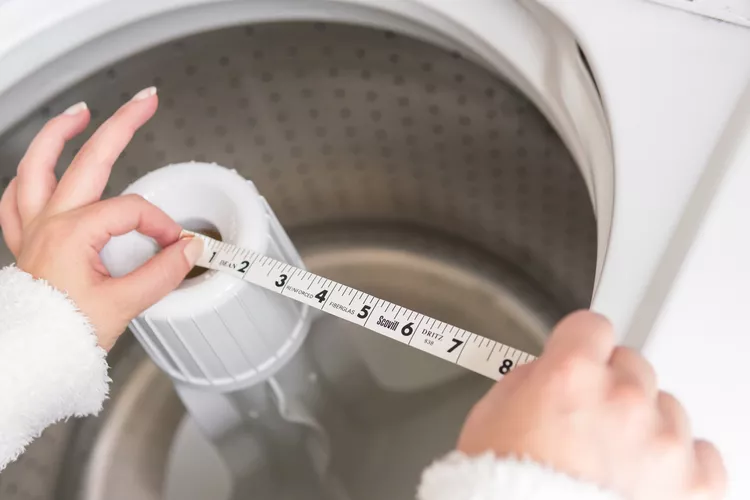
Photo Credit: thespruce
The volume of the washing machine’s drum is measured to determine how much laundry it can store and wash in a single cycle. This is referred to as drum sizes and capacities. The following are some essential details concerning drum sizes and capacities:
Drum Size
The actual dimensions of the washing machine drum are referred to as the drum size. Typically, it is expressed in cubic feet or cubic liters. Small to big drum sizes are typical, with variations in between. Greater capacity and the ability to accept larger loads of laundry are often indicated by larger drum sizes.
Capacity
The amount of laundry that a washing machine can successfully clean in one cycle is referred to as its capacity. Usually, it is expressed as a weight, such as pounds or kilograms. A washing machine’s capacity and drum size are intimately correlated. Larger drum sizes often have higher capacities, enabling more washing to be done at once.
Recognizing the Capacity Range:
The capacity of a washing machine might change based on the type and brand. The minimum and maximum load sizes advised for optimum operation are often indicated by the capacity range. For instance, the capacity range of a washing machine may be 8 to 12 pounds, suggesting that the suggested load size should fall within this range for effective and efficient cleaning.
Considerations for Drum Size and Capacity:
– Household Size: Take into account how many people live in your home and how much laundry is produced on a regular basis. Larger drum sizes and higher capacity may be needed for washing machines in larger homes to manage heavier loads.
– Frequency of Use: If you do laundry regularly, a washer with a greater capacity can help you save time and money by allowing you to do fewer loads at once.
– Space Restrictions: Make sure the washing machine’s overall dimensions and drum size fit in your laundry room or utility room.
Performance and Efficiency:
While higher drum sizes and capacities make it easier to wash larger loads, it’s crucial to also take the washing machine’s water and energy efficiency into account. Even with lesser loads, efficiency is promoted by certain washing machines’ customizable settings that optimize water use dependent on the load size.
It’s critical to comprehend the capacity and drum size of a washing machine before selecting a model that works for your family. In order to make an informed choice, take into account variables like load size, usage frequency, and available space.
Common Washing Machine Drum Problems
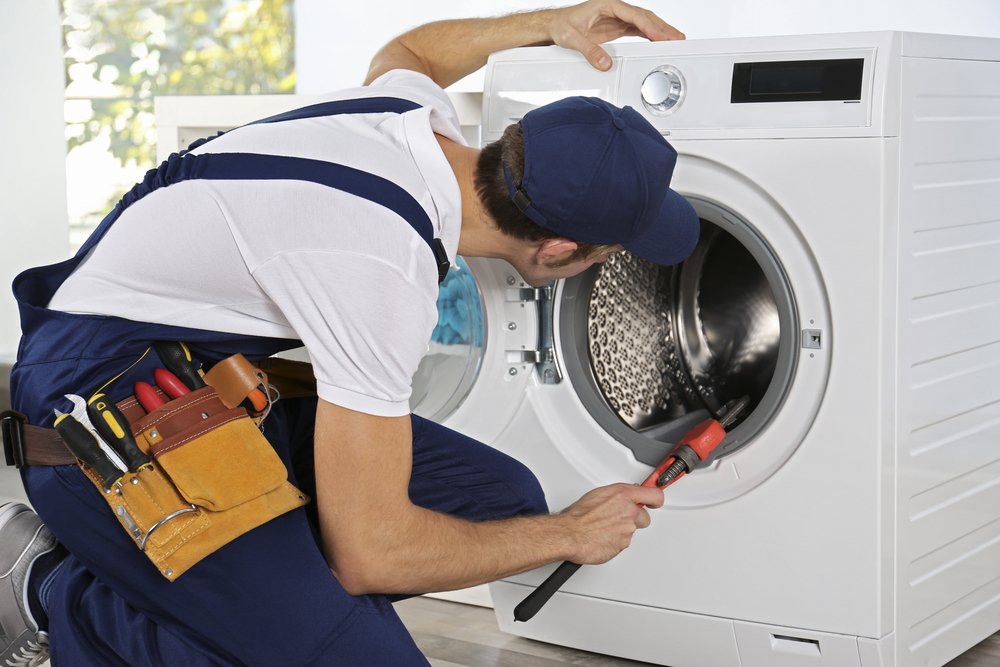
Photo Credit: manwithawrench
Different issues that impact washing machine drum performance and efficiency might occur. The following are some typical problems with washing machine drums:
Load Unbalance:
When the laundry is spread unevenly inside the drum, it frequently leads to an imbalanced load. As a result, the washer may vibrate excessively and make loud noises when spinning. Additionally, it can cause the washing machine to shut off automatically or display error messages. Overloading the washer, washing large items simultaneously, or poorly dispersing the clothes in the drum can all result in an uneven load.
Drum agitator problems
The drum agitator in top-loading washers is in charge of rearranging the clothes to achieve complete cleaning. When the drum agitator is malfunctioning, the cleaning of the garments may be inadequate or uneven. The agitator might break down, get separated, or become loose, making it unable to efficiently agitate the wash. Wear and tear, damage or inappropriate use are all potential causes of this.
Drum Blockage:
When tiny particles like pennies, buttons, or other objects get wedged in the gap between the drum and the outer tub, drum blockage can result. During the washing cycle, some items may make noise, rattling, or scraping sounds. If not immediately removed, they can also cause harm to the drum or other parts. Blockages can also interfere with the drainage system, leading to water buildup in the drum or obstructing normal water flow.
Drum Leaks:
Leaking is a frequent issue that may result from problems with the drum. It could be brought on by gaskets, seals, or hoses attached to the drum that are faulty or worn out. Water may drop or collect around the washing machine while it is in use if there are leaks. To prevent water damage to the equipment or the surrounding region, leaks must be fixed very away.
Failure of the drum bearing
The drum’s ability to revolve smoothly is due to the drum bearings. These bearings may deteriorate or break down over time, creating a number of problems. Excessive noise, especially during the spin cycle, and a loose or wobbling drum are signs of drum bearing failure. To fix this issue, drum bearings often need to be replaced or repaired.
Corrosion or rust on a drum:
Rust or corrosion may form over time if the drum is composed of materials that are not resistant to rust, such as porcelain-coated or plastic drums. This could harm the drum structure and discolor the laundry. Rust or corrosion can develop as a result of moisture exposure, poor cleaning practices, or strong cleaning agents.
It is advised to refer to the owner’s handbook, get in touch with customer service, or hire a qualified technician for assistance if you have any of these drum problems or any other difficulties with your washing machine in order to ensure appropriate diagnosis and repair.
Maintaining Your Washing Machine Drum

Photo Credit: bestproducts
Maintaining the drum of your washing machine is essential for ensuring its durability, effective operation, and clean clothes. Here are some pointers to keep your washing machine drum in good shape:
Clean the Drum Regularly:
To prevent a buildup of dirt, lint, detergent residue, or other debris, regularly clean the drum. Running an empty hot water cycle with a cup of white vinegar or a washing machine cleanser made exclusively for drum cleaning can clean the drum. This maintains the freshness of the drum and helps to get rid of smells and mold or mildew growth.
Wipe Down the Drum and Door Seal:
To eliminate any apparent dirt or moisture, wipe out the drum and the rubber door seal with a wet cloth after each cycle of washing. This avoids the buildup of dirt and lowers the possibility of mold or mildew formation. Pay close attention to the rubber seal’s folds and crevices since they might trap moisture and dirt.
Leave the Door Open:
Keep the washing machine door slightly ajar after each use to promote airflow and drum drying. This assists in halting the development of mold or mildew, both of which like moist settings. Any offensive scents are also reduced by leaving the door open.
Avoid Overloading:
Don’t fill the washing machine drum more than the manufacturer recommends. In addition to imbalances, increased wear and tear, and potential machine damage, overloading can put undue strain on the motor and the drum. To maintain peak performance, adhere to the load capacity recommendations provided by the manufacturer.
Remove Objects from Pockets:
Make sure all pockets are empty before placing any clothing in the drum. Coins, keys, and other tiny things might clog the drum during the wash cycle, damage it, or produce noise. Taking items out of pocket might assist to avoid these problems.
Use the Detergent Suggested:
Use the suggested detergent quantity and type from the manufacturer. Too much detergent might clog the drum with extra suds and buildup, reducing its effectiveness and cleanliness. Follow the directions on the detergent container and modify the amount according to the size of the load and the local water hardness.
Examine for Leaks:
Check the connections, hoses, and drum often for any leaks. Check the area around the washing machine for any water puddles or moisture. If there are any leaks, fix them right away to limit future damage and water-related problems.
Organize expert maintenance:
Consider planning routine professional washing machine repair. To make sure everything is in good working condition, a professional expert may examine and service the drum, bearings, seals, and other parts.
You can assure clean and fresh laundry while extending the life of your washing machine drum by following these maintenance suggestions. For precise maintenance instructions for your individual washing machine model, always consult the manufacturer’s handbook.
Conclusion
As a result, the drums of our washing machines are essential to the thorough cleaning of our clothes. They are made to be soft on our clothing while enduring the rigors of the washing process. Durability and corrosion resistance are ensured by the materials employed, such as porcelain enamel or stainless steel. The shape of the drum, with its different patterns and holes, also contributes to improving the washing activity by enabling better dispersion of water and detergent, which produces cleaner and fresher clothing. To maximize performance and extend the drum’s lifespan, regular maintenance and cleaning are required. Modern washing machine drums also have features like antibacterial treatments or self-cleaning choices, further boosting cleanliness and ease thanks to technological improvements. Drums for washing machines are essential parts that help our machines function effectively and last a long time while also streamlining our laundry processes and giving us clean, well-maintained clothing.
Frequently Asked Questions
1. How frequently should I clean the drum of my washing machine?
According to use, cleaning the washing machine drum should be done every one to three months.
2. Can I clean the drum of my washing machine with bleach?
You may use bleach to clean a washing machine drum, but only if you properly diluted it and followed the manufacturer’s instructions.
3. Is the noise a washing machine drum makes when running normal?
Answer: While some noise is natural, excessive noise may be a sign of a deeper problem. For solutions, see the article’s troubleshooting section.
4. Are you able to change the drum in your washing machine by yourself?
– Response: Changing a washing machine drum might be difficult. It is preferable to get advice from a qualified technician or to study the manufacturer’s instructions.
5. How long do drums for washing machines normally last?
– Response: A washing machine drum’s lifespan varies based on usage, upkeep, and quality. They can endure from 10 to 15 years on average.




